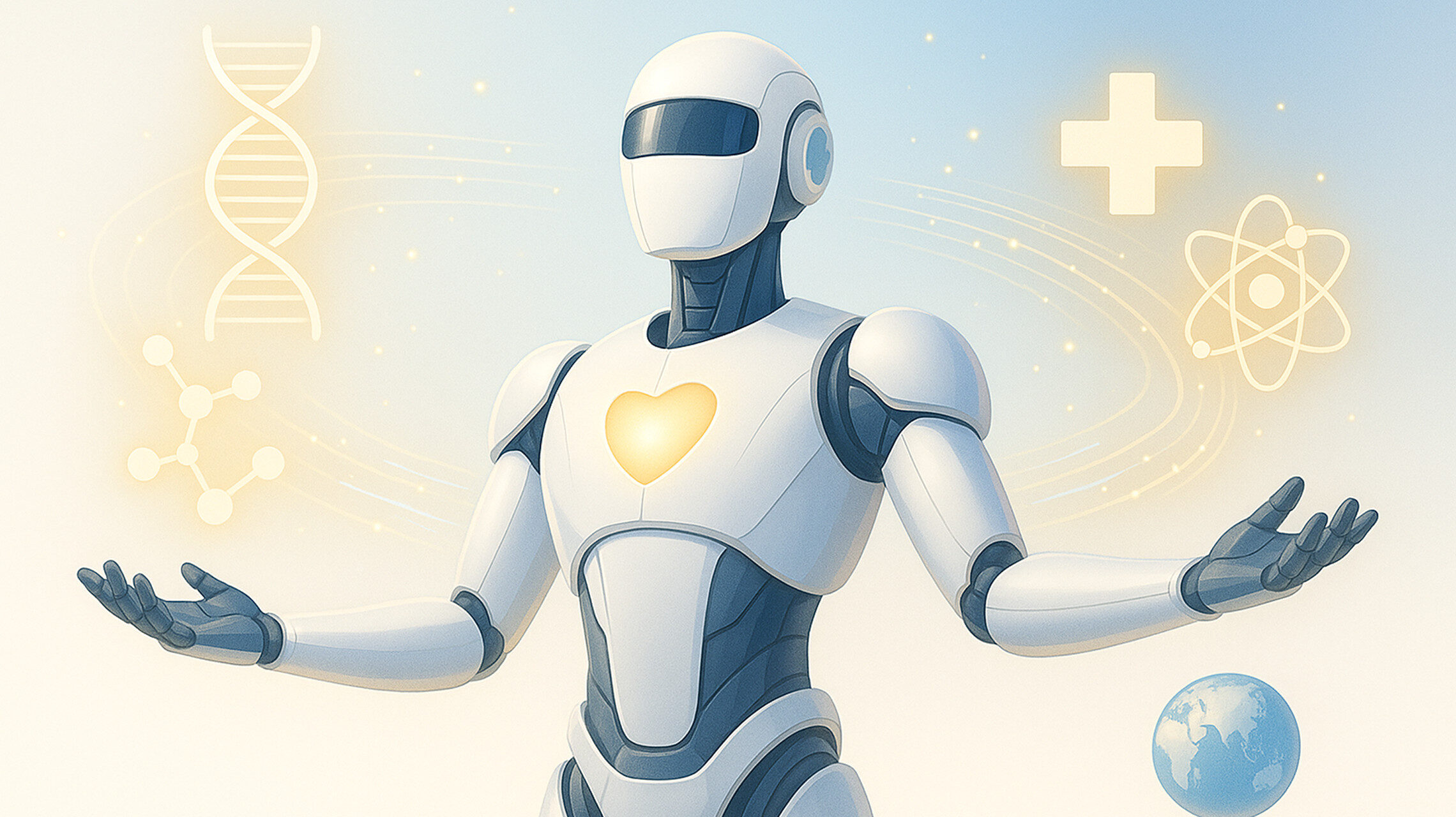A Land of Geniuses
In his essay “Machines of Loving Grace”, Anthropic CEO Dario Amodei paints a fascinating picture. He describes future AGI as a “nation of geniuses in a data center.” According to him, this kind of “powerful AI” could become a reality as early as 2026.
But what would that actually mean? We’re talking about intelligence that surpasses Nobel laureates in biology, programming, mathematics, and virtually every other field. It could prove unsolved theorems, write outstanding novels, and create entire software systems from scratch.
This AI would have access to all digital interfaces: text, audio, video, and internet control. It doesn’t just answer questions—it performs tasks autonomously that would normally take humans hours, days, or even weeks. Think of it as a hyperintelligent worker, but operating 10 to 100 times faster than a human.
The revolutionary part: this intelligence can replicate itself millions of times. Each copy works independently or collaborates when needed. Different versions specialize in different tasks. It’s literally a nation of top researchers inside a data center.
The Medical Revolution of the Compressed Century
Amodei’s forecasts for medicine are particularly striking. He speaks of a “compressed 21st century”: advances that would normally take human biologists 50 to 100 years could be achieved in just 5 to 10 years.
How? These virtual researchers don’t communicate via language with its limited 100-bit-per-sentence rate. They share knowledge at trillions of bits per second. This level of information exchange enables exponential progress. Millions of drug candidates are tested virtually. Robots in automated labs perform non-stop experiments. By combining genomics, clinical trial data, and environmental factors, these systems detect patterns no human could ever see.
And it’s not just about curing cancer or Alzheimer’s. Exploring biological brain cells and comparing them to digital neural networks might make mental illnesses curable. Amodei even speculates that positive mental states—like inspiration, compassion, and fulfillment—could become more common.
Climate Change and the Dream of the Superconductor
Demis Hassabis of Google DeepMind proudly reports that AI has already simulated two million stable new materials—some of which could become room-temperature superconductors, the holy grail of the energy transition.
A room-temperature superconductor would change everything. Solar power could be transmitted losslessly from deserts to cities around the globe. The authors of our paper describe how an AGI could simulate countless superconductor materials, identify promising candidates, and have them synthesized and tested in robotic labs.
Living to 150 and Universal Basic Income
The promises go even further. With intelligence as a near-free production factor, the cost of almost everything would plummet. AI doctors—trained on 100 million patient records and personalized with each patient’s genome—would deliver vastly superior diagnoses. AI teachers would act as personal coaches, adapting to each student’s unique learning needs.
With a basic income and a life expectancy of 150 years, people could enjoy the benefits of AI-discounted goods and services. Only non-scalable things like original artworks or apartments in prime locations would remain expensive.
The Dark Side of the Promises
However, our research paper also highlights this: it is precisely these utopian promises that drive the dangerous AI arms race. Altman, Musk, Hassabis, and others paint a picture of a technological paradise where every human problem can be solved. Even the great unanswered questions of physics—like unifying quantum mechanics and general relativity—are said to be within reach.
But these grand promises can blind us to the risks. Who wants to be the killjoy who prevents the cure for all diseases? As our paper warns, the race for AGI can easily make caution seem like an obstacle in the face of such temptations.
Reality or Delusion of Grandeur?
Are these promises realistic? According to the experts cited in our paper, such a future is at least technically possible. An AGI that can multiply itself freely and conduct research at superhuman speed could indeed achieve revolutionary breakthroughs.
But the path to that future is uncertain. And as our previous analyses have shown, this very power—if placed in the wrong hands or left uncontrolled—could pose an existential threat.
The vision of a “nation of geniuses in a data center” is seductive. But whether we build paradise or descend into hell depends entirely on how we guide this journey. The next few years will reveal whether humanity is wise enough to develop such godlike power responsibly. Even the construction of such a data center introduces its own set of uncertainties and challenges, as illustrated in a recent video on the Stargate Data Center project.
In the next parts of this series, we critically examine these promises:
- How realistic is the projected development speed?
- Which technological barriers are being ignored by the optimists?
- What do prominent skeptics say about these timelines?
At SemanticEdge, we closely monitor these developments. As pioneers in Conversational AI, we understand both the potential and the risks of advanced AI systems. SemanticEdge stands for safe and transparent AI, based on the interaction between generative AI and a second, expressive rule-based intelligence—designed to minimize hallucinations and alignment faking.
Subscribe to our newsletter for ongoing analysis from our research paper.
